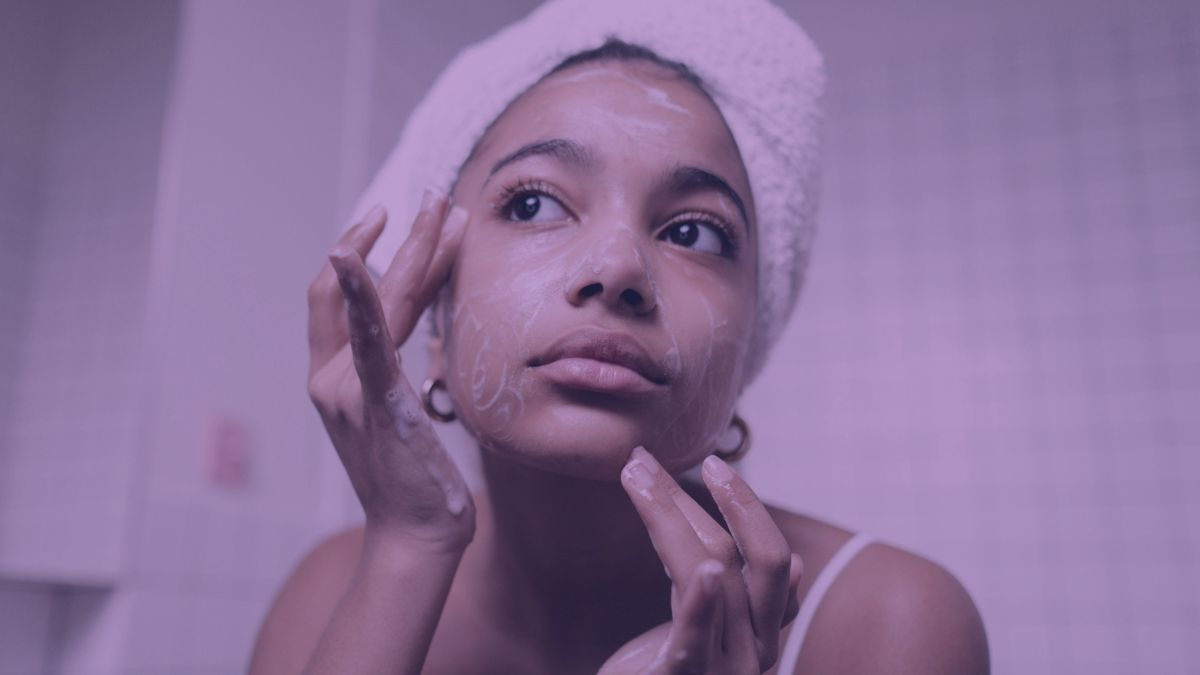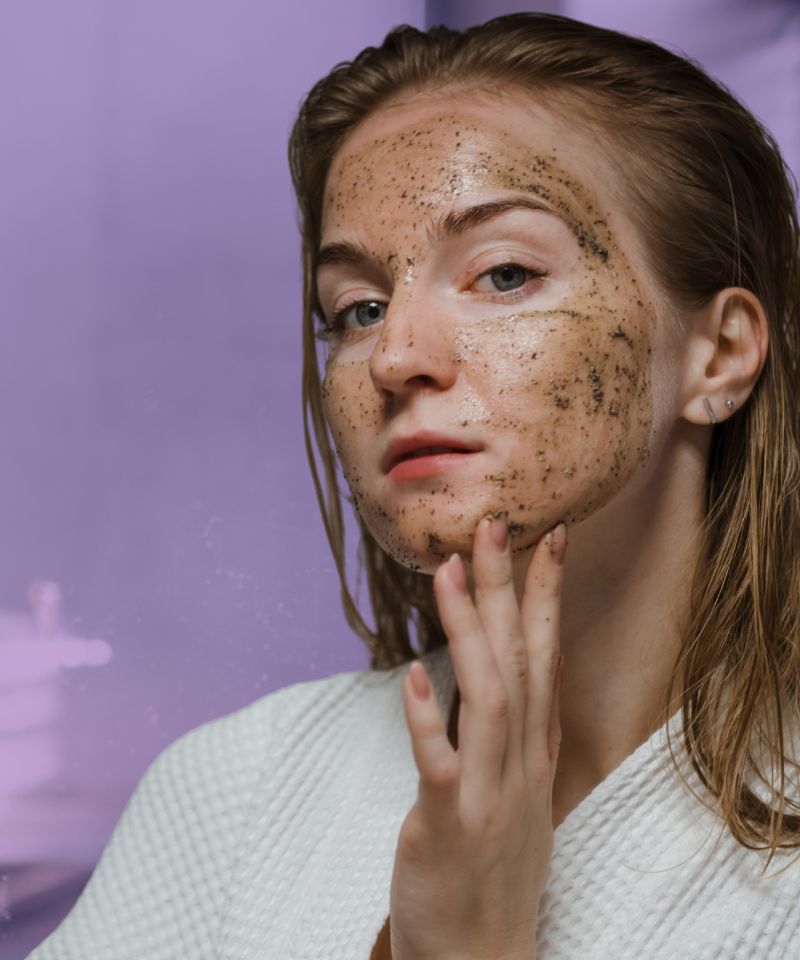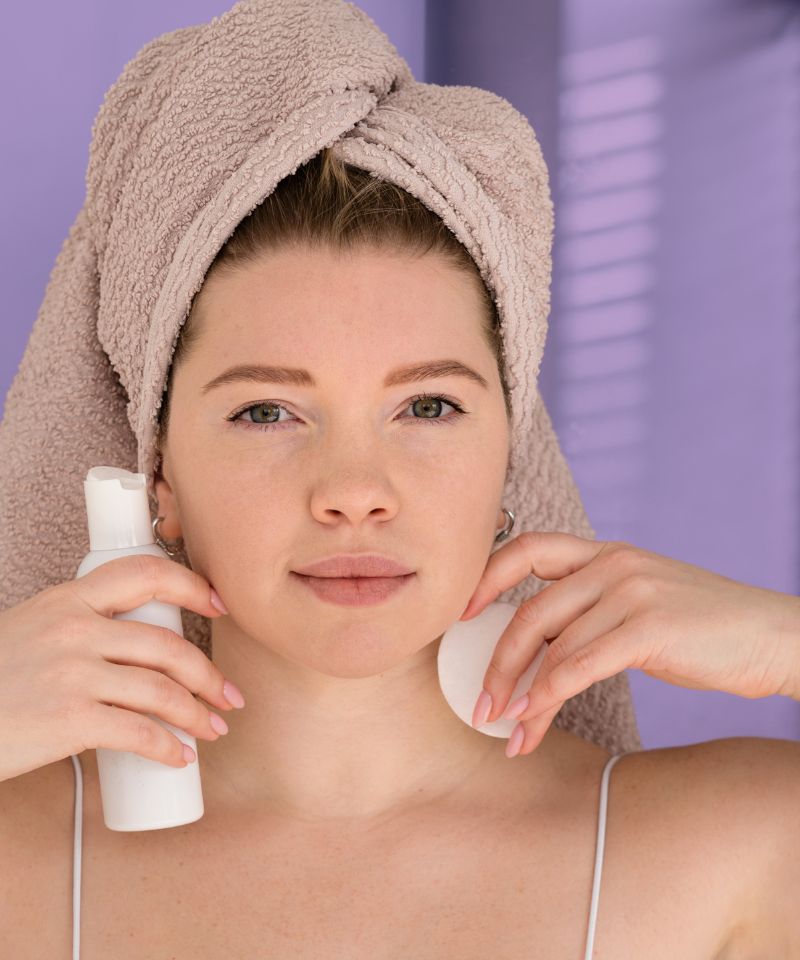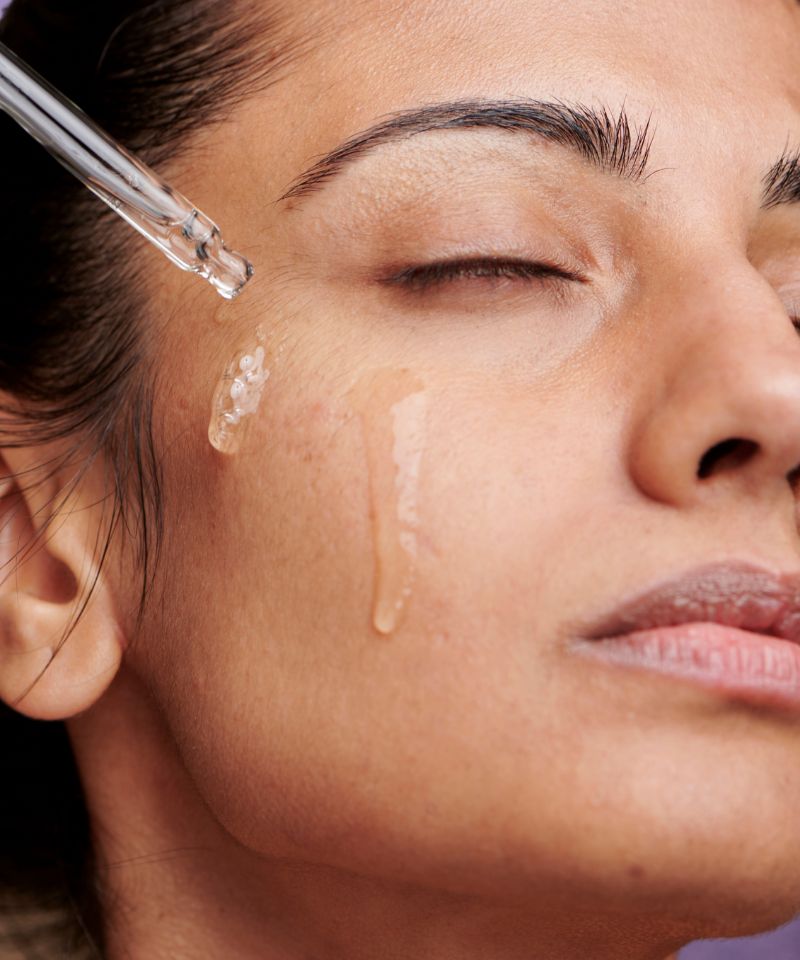While the end goal of exfoliation remains constant—to reveal clear, even, and refined skin from beneath—the means to achieve it diverge into two primary categories: physical and chemical exfoliation.
Each approach has its mechanisms, benefits, and drawbacks, making them suitable for different skin types and concerns.
Therefore, this article will delve into the differences between physical and chemical exfoliants, outlining their types, how they work, their pros and cons, and which one might be best for you.

What Are Physical Exfoliants?

Physical exfoliants involve a physical action to remove dead skin cells with the use of products containing small, solid particles like microbeads, sugar, salt, or even ground nut shells, as well as tools like brushes, sponges, or cloths designed for exfoliation.
How Do Physical Exfoliants Work?
The mechanism of action for physical exfoliants is straightforward: through manual rubbing and massaging, these gritty substances or tools physically slough off dead skin cells from the skin’s surface.
The intensity of exfoliation can be controlled by the amount of pressure applied and the nature of the exfoliating agent used.
Physical Exfoliants Pros:
Immediate results: Physical exfoliation often leaves the skin feeling smooth and looking bright immediately after use.
Control over pressure: Physical exfoliants allow you to control the amount of pressure applied to your skin, making them suitable.
Affordable and easy to use: Physical exfoliants are often more affordable and accessible than chemical exfoliants, making them a preferred choice for many.
Physical Exfoliants Cons:
Potential for skin damage: Over-exfoliation or using harsh materials can lead to micro-tears in the skin, causing irritation and sensitivity in the short term and sagging, redness, and dilated pores down the road.
Not suitable for all skin types: Those with sensitive, acne-prone, or inflamed skin may find physical exfoliants too abrasive and irritating.
What Are Chemical Exfoliants?

Chemical exfoliants are products formulated with specific acids or enzymes that break down the protein bonds between dead skin cells, allowing them to be shed from the skin’s surface without physical scrubbing.
Types of Chemical Exfoliants
AHAs (Alpha Hydroxy Acids): Water-soluble acids like glycolic and lactic acid that exfoliate the skin’s surface. Due to their moisturizing and rejuvenating properties, they are suitable for dry and sun-damaged skin.
BHAs (Beta Hydroxy Acids): Oil-soluble acids such as salicylic acid are ideal for oily and acne-prone skin because they can penetrate deeper into the pores to clear out acne-causing debris.
Enzyme Exfoliants: These use natural enzymes from fruits like papaya and pineapple that gently break down the keratin protein in dead skin cells and are suitable for sensitive skin types.
How Chemical Exfoliants Work?
Chemical exfoliants work by chemically loosening the glue-like substances that hold dead skin cells together.
AHAs and BHAs penetrate the skin at different levels, either focusing on surface exfoliation or going deeper to clear pores.
AHAs are water-soluble, meaning they work on the skin’s uppermost layers.
There, they loosen the bonds between dead cells and encourage them to shed, revealing brighter and smoother skin underneath.
BHAs, on the other hand, are oil-soluble, which means they can cut through the oil on the skin’s surface and travel deeper into the pores, where they continue to dissolve the clogging plugs made from oil, dead skin cells, and bacteria.
This action also helps reduce inflammation, control oil production, and unclog pores, making them highly effective for treating acne-prone skin.
Finally, enzyme exfoliants eat away the protein keratin, which is the main component of dead skin cells, loosening and lifting them off the surface to reveal smoother and brighter skin underneath.
Chemical Exfoliants Pros:
Less skin damage: Since no scrubbing is involved, there’s a lower risk of micro-tears or irritation from over-exfoliation.
Targeted treatment: Chemical exfoliants can address specific skin concerns like acne, fine lines, and uneven skin tone more effectively.
Suitable for sensitive skin: Enzyme exfoliants and gentle AHAs are better suited for sensitive skin.
Chemical Exfoliants Cons:
Potential for irritation: High concentrations or improper use can lead to skin irritation, redness, and sensitivity.
Increased sun sensitivity: Due to peeling layers of UV-protective dead skin, AHAs and BHAs increase the new skin’s sensitivity to the sun and should only be used along with strict sunscreen use.
Choosing the Right Exfoliant for Your Skin Type
Choosing the right exfoliant for your skin type is crucial not only for minimizing the risk of side effects but also for giving you the best results by catering to your skin and boasting unique properties to address your individual skin concerns effectively.
Here’s how to choose the right exfoliant:
The Best Exfoliants For Sensitive Skin
- Enzyme Exfoliants
- Lactic Acid
These are gentle exfoliants that work to dissolve dead skin cells without causing irritation or redness.
Additionally, lactic acid also has humectant properties, which means it can hydrate the skin by drawing moisture into the upper layers of the epidermis to keep it soothed and plump.
The Best Exfoliants For Oily and Acne-Prone Skin
Salicylic acid is a go-to exfoliant for oily and acne-prone skin because it can penetrate deep into the pores to clear out excess oil, dead skin cells, and bacteria and minimize inflammation.
Glycolic acid also works effectively on oily skin by dissolving the bonds between dead skin cells and revealing brighter and smoother skin from underneath.
The Best Exfoliants For Dry Skin
- Lactic Acid
- Mandelic Acid
Lactic acid is a mild AHA that exfoliates and hydrates the skin at the same time, making it ideal for dry skin.
Mandelic acid is another AHA with a larger molecular size, which means it penetrates the skin more slowly, causing less irritation and providing hydration while also stimulating collagen production for anti-aging benefits.
The Best Exfoliants For Mature and Sun-Damaged Skin
- Lactic Acid
- Glycolic Acid
AHAs are ideal for mature and sun-damaged skin as they can help stimulate collagen production, reduce the appearance of fine lines and wrinkles, and improve skin texture.
Glycolic acid, in particular, is known to work well on sun-damaged skin by breaking down the damaged top layer of skin cells to reveal brighter and smoother skin underneath.
On the other hand, lactic acid can also help with moisture retention, keeping the skin hydrated and youthful-looking.
Application Tips for Optimal Results

Here are a few application tips to minimize the potential of side effects and achieve optimal results when incorporating exfoliants into your skincare routine:
Patch Test: When trying a new exfoliant, perform a patch test on a small skin area to check for adverse reactions before applying it to your entire face.
Start Slowly: Begin with a lower concentration of chemical exfoliants or a gentler physical exfoliant, applying it once or twice a week, and gradually increase usage as your skin adapts.
Moisturize: After exfoliation, it’s crucial to replenish your skin’s moisture. Apply a hydrating moisturizer to soothe the skin and enhance the barrier function.
Use Sun Protection: Exfoliated skin is more susceptible to UV damage. Always apply a broad-spectrum sunscreen of SPF 30 or higher during the day, even when indoors.
Listen to Your Skin: Pay attention to how your skin responds after using an exfoliant. If you experience discomfort, redness, or excessive dryness, you should adjust the frequency of usage.
Don’t Mix Exfoliating Products With Active Ingredients: Not all products work well together. Therefore, avoid mixing exfoliating products with other active ingredients, as it can cause irritation, discomfort, and barrier damage.
Combining Exfoliants with Other Skincare Products
Incorporating exfoliants into your skincare routine can significantly enhance the effectiveness of other products like moisturizers and serums.
However, it’s crucial to be mindful of the ingredients and their action and not mix them haphazardly, as this can lead to irritation or diminished results.
Here are some ingredients exfoliants can be combined with:
Niacinamide: Combining exfoliants with niacinamide can help regulate sebum production, refine the appearance of enlarged pores, and improve skin texture.
Hyaluronic Acid: When used alongside exfoliants, hyaluronic acid can enhance skin hydration by drawing moisture into the skin, reducing the potential for irritation and dryness.
Peptides: Peptides paired with exfoliants can accelerate skin repair and renewal, improving elasticity and reducing fine lines and wrinkles.
Here are some ingredients exfoliants shouldn’t be combined with:
Retinoids: Combining retinoids and exfoliants can irritate the skin because the former increases cellular turnover while the latter strips the cells off the skin, which could lead to a compromised skin barrier.
Vitamin C: Combining exfoliants with vitamin C can cause irritation, so it is not recommended for beginners or those with sensitive skin.
Benzoyl Peroxide: Benzoyl peroxide and exfoliants can cause excessive dryness and irritation when used together, so it’s best to avoid combining them.
Hydroquinone: Combining hydroquinone with exfoliants can cause irritation and may also lead to permanent skin damage, such as loss of pigment and uneven skin tone.
Physical Exfoliants: Using both physical and chemical exfoliants simultaneously can increase the risk of over-exfoliation, leading to dryness, irritation, a damaged skin barrier, and discomfort.
Chemical Exfoliants: Using multiple chemical exfoliants at once can increase the risk of over-exfoliation and skin irritation. It’s best to stick to one chemical exfoliant at a time.

My name is Simone and I am a certified skin specialist. I created this website to teach my readers how to take great care of their skin and I also like to occasionally share my honest opinions on skincare products I’ve tried. You can learn more about me here.
